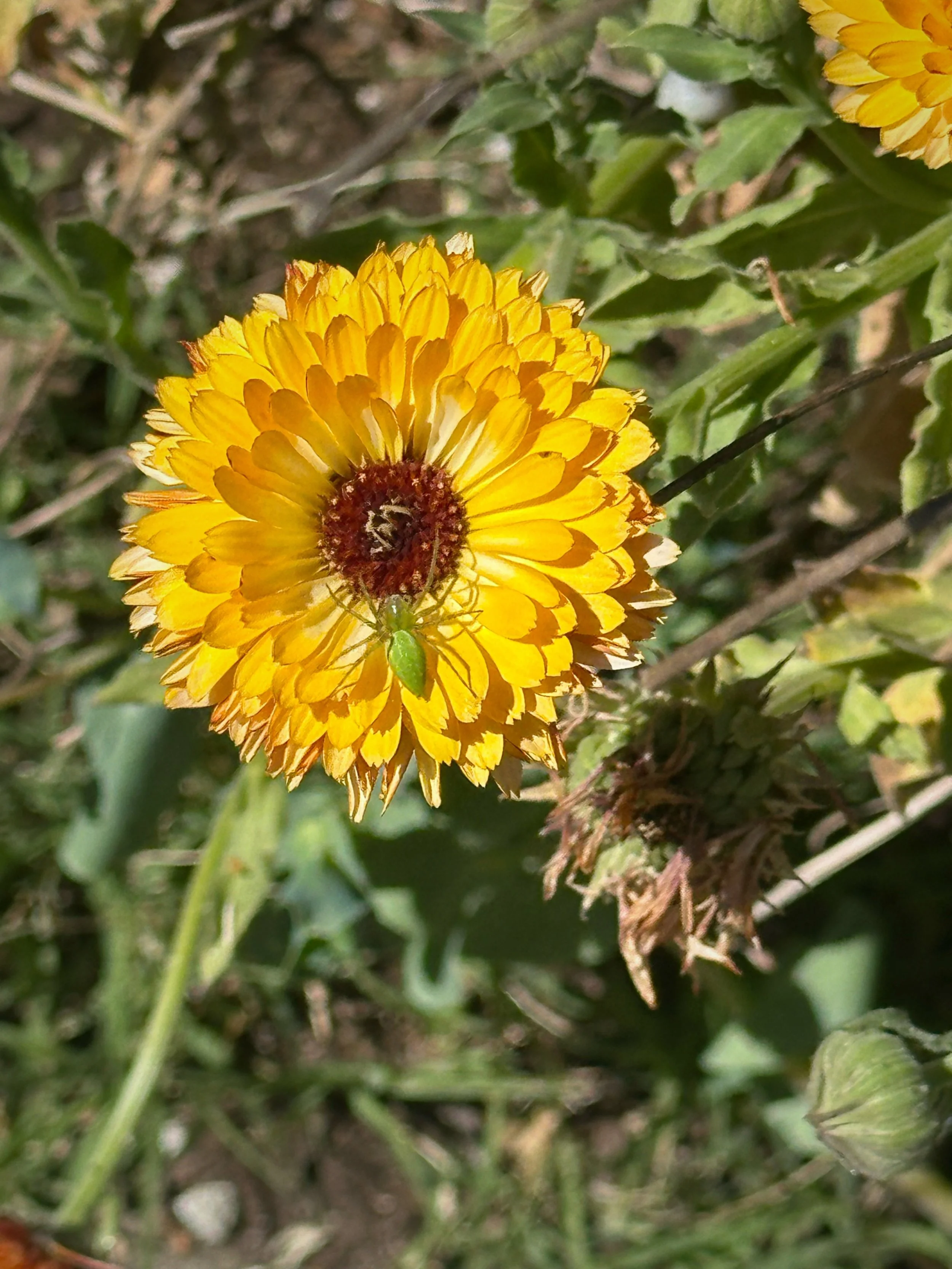MULTI-COLOR
CALENDULA
Cover crops and companion plantings offer a wide variety of benefits not only to soil composition and health but also to the plants themselves. Among the mix is a wide variety of sunflowers, marigolds, daisies, zinnias, dill, and calendula (some corn too for good measure!). These plants have been chosen for their specific beneficial properties and to increase diversity in our fields.
As cannabis farmers, we are mono-croppers, and we must try and minimize the effects of this on our environment and the quality of our soil. Luckily there are several tools at our disposal. Primarily is cover-cropping that introduces variety into our crop rotation which provides us with all of the benefits of increased organic matter, reduced compaction, and greater overall nutrient retention.
Secondly is the use of ruminant grazing. This year it was cows, which adds a natural fertilizer to our gardens and increases the microbiological diversity of the soil. Not only does rotational grazing benefit our particular patch of land, but across the property they help to eliminate invasive grasses and promote the abundance of native plant species by giving them a leg-up against other plant species that might choke them out. This leads to greater biodiversity and more opportunities to support overall pollinator populations.
Then lastly is companion plantings. These specific plants lend unique properties to our gardens and also help cut back on the redundancy of row after row of big beautiful cannabis buds and help us to fight off nasty pests that would traditionally be blasted with chemical and systemic pesticides under traditional farming methods.
All of these plants work in cohesion to create an environment that is favorable to growing “clean” cannabis products.
HOW TO GROW
Calendula is a part of the Marigold family and acts in a similar manner to the Marigold plant, exhibiting the same anti-pest benefits by acting as a trap plant.
It is also a powerful edible medicinal herb that we typically like to infuse with our home-grown olive oil for salves and balms or to sprinkle on salads.
Plant seeds in full sun, in pots or directly in soil after all threat of frost has passed, 1/2” deep and 4-6” apart. Regularly remove spent flowers to promote continuous blooming and enjoy!



